Here’s a recipe with step-by-step photos for homemade chicken stock.
They don’t call it magic gold for nothing. You, too, can have this gorgeous, clear, restorative, delicious smelling chicken broth. As long as you’re planning on sticking around for a weekend. It doesn’t take a lot of effort — but it does take some time. Not active time. Just waiting time. Really. It couldn’t be simpler.
Ready?
Here’s what I mean by time. You will have started this earlier in the year/month/week by saving bones from previous chickens.
As you know, Greg and I like to serve a lot of butterflied chicken on the grill, so we have a lot of chicken backs leftover. But you might have wingtips, or necks, or anything else. Freeze it. When it’s time to make stock, take it out and let it defrost.
I also like to use some chicken meat, too. We happened to have three packages frozen of Murray’s chicken thighs, and two packages of bonesless, skinless breasts from Whole Foods. I defrosted the lot:
Get out a couple onions, carrots, celery and garlic cloves:
Rinse everything off, but don’t bother peeling it. I once read that the onion skin gives your stock more of a deeper brown color. I’m cool with that.
I put all the chicken thighs and a couple of cooked breasts that I had frozen:
I held the breasts back in case I wanted to have some nice chunks for chicken soup or something.
Cut the onions in half and throw them in the pot:
Do the same with the carrots:
And the celery:
I added a few dried bay leaves:
And some parsley from the garden:
Put the pot on and bring it to just under a boil.
Try to get that sweet spot where it doesn’t boil, but it’s bubbling, almost like lava bubbles. Of course, most of the time, it will come to a boil because you’re off doing something else. Don’t worry about it. Just turn it down and let it simmer. Simmering is when it bubbles like that. Bloop. Bloop. Bloop. Bloop.
You thought I forgot about the bones, didn’t you! I did not. Even if they’re not all the way defrosted, you can go ahead and put them on a sheet pan.
Or, in this case, two sheet pans:
You can never have enough sheet pans, in my opinion.
Roast the bones at 350 for 1 to 1 1/2 hours, until they’re nice and brown and have left brown bits all over the bottom of your pans, like so:
Place the pan on top of two burners, and use tongs to place the bones into the simmering stock.
Now, add about 2 cups of water to the pan, and turn the burners on:
The water will come to a boil, and it will be easy to scrape up the brown bits from the bottom of the pan using a wooden spoon:
You may need to tilt the pan slightly to get the water to all the edges. That’s fine, just be sure to hold the pan with an oven mitt or a towel:
Slowly and carefully pour this water with all that yummy brown goodness into your stock pot. I even use a rubber spatula to get every last bit up:
Don’t wash your pan. (You’ll see why in a minute.)
Let your stock bubble away for as long as you like. I usually go another or two at least.
Now remove all the big heavy parts of the stock — meat, bones, vegetables — and put them on the pan.
If you like, you can pick through this and use some of the meat, for chicken salad, shredded in soups, that kind of thing. I held back those breasts before, so I decided not to bother this time.
Strain what’s left into a smaller stock pot:
(Ahem. Yes. This was after a cocktail, as you can see. Just be very careful!)
Now you have your strained stock. But you’re not home yet, friends.
Place a piece of plastic wrap over the top and refrigerate the stock overnight. In the morning, the fat will have risen to the top, and you can pull it off pretty easily like so:
Whatever doesn’t come off with the plastic, you can use a slotted spoon to skim off the top:
Don’t worry about getting it all.
Put the stock on to boil, and set about separating some eggs:
I used four for this 8-quart pot:
Whisk the whites until they’re nice and frothy, then crush the eggshells into the whites:
Put this into your stock. Trust me.
Let it come to a boil. The egg whites and shells will act like a magnet for all the gross particles that are left in your stock.
It will look pretty nasty for a little while:
But just remove most of that with a slotted spoon, and then strain through cheesecloth into a bowl. Pure gold.
Isn’t that just gorgeous! You can’t imagine how amazing it smelled. Look at that steam coming off the top!
All they yucky is left in the pot and on the cheesecloth:
I like to use a measuring cup with a spout and pour my stock into quart-sized bags to freeze. So I did that.
(See the bags behind there?)
Now I’m ready to make soup whenever I want. And all I have to do now is start saving bones again.
Here’s a recipe, but as you can tell from this post, it’s not the be-all-end-all. Just make stock a couple of times. You’ll get comfortable with it, and soon enough you won’t need a recipe at all.
Liz’s Homemade Chicken Stock
9 bone-in chicken thighs
3 medium onions, rinsed and chopped in half
4 medium carrots, rinsed and chopped in half
4 medium celery ribs, rinsed and chopped in half
5 cloves garlic, smashed and peeled
3 bay leaves
1/2 bunch parsley, rinsed
Bones, such as backs, wingtips, necks
4 eggs, separated, shells reserved
Preheat the oven to 350 degrees.
Place the chicken thighs, onion, celery, garlic, bay leaves and parsley into a large stockpot. Fill with about 10 to 12 quarts of water and bring to just under a boil.
Try to get that sweet spot where it doesn’t boil, but it’s bubbling, almost like lava bubbles. Of course, most of the time, it will come to a boil because you’re off doing something else. Don’t worry about it. Just turn it down and let it simmer. Simmering is when it bubbles like that. Bloop. Bloop. Bloop. Bloop.
Place the bones on a sheet pan. Roast the bones at 350 for 1 to 1 1/2 hours, until they’re nice and brown and have left brown bits all over the bottom of the pan.
Place the pan on top of two burners, and use tongs to place the bones into the simmering stock. Add about 2 cups of water to the pan, and turn the burners on. The water will come to a boil, and it will be easy to scrape up the brown bits from the bottom of the pan using a wooden spoon:
You may need to tilt the pan slightly to get the water to all the edges. That’s fine, just be sure to hold the pan with an oven mitt or a towel. Slowly and carefully pour this water with all that yummy brown goodness into your stock pot. I even use a rubber spatula to get every last bit up. Don’t wash your pan.
Let your stock bubble away for another hour or two. Using tongs, remove all the big heavy parts of the stock — meat, bones, vegetables — and put them on the sheet pan.
If you like, you can pick through this and use some of the meat, for chicken salad, shredded in soups, that kind of thing. Strain what’s left into a smaller stock pot. Place a piece of plastic wrap over the top and refrigerate the stock overnight. In the morning, the fat will have risen to the top, and you can pull it off using the plastic. Whatever fat doesn’t come off with the plastic, you can use a slotted spoon to skim off the top.
Put the strained stock on to boil, and separate the eggs. Whisk the whites until they’re nice and frothy, then crush the eggshells into the whites. Put this into your stock. Let it come to a boil. The egg whites and shells will act like a magnet for all the gross particles that are left in your stock. It will look pretty nasty for a little while. Remove the egg white mixture with a slotted spoon, and then strain the remaining stock through cheesecloth into a bowl.
Label and date 8 to 10 quart-sized bags. Using a measuring cup with a spout, pour the stock into bags. Lay them flat in the freezer until they’re frozen solid, then store as you like.

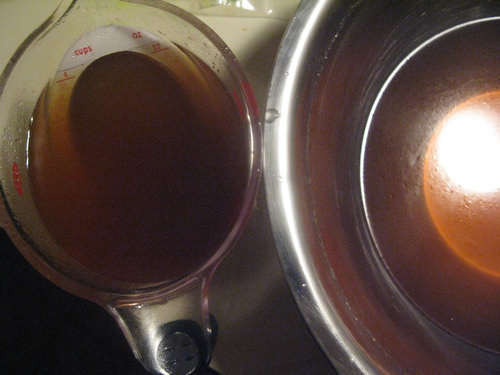
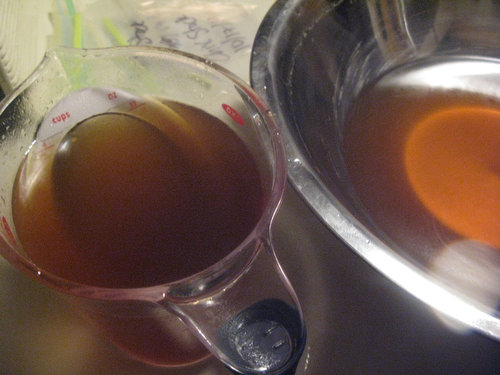
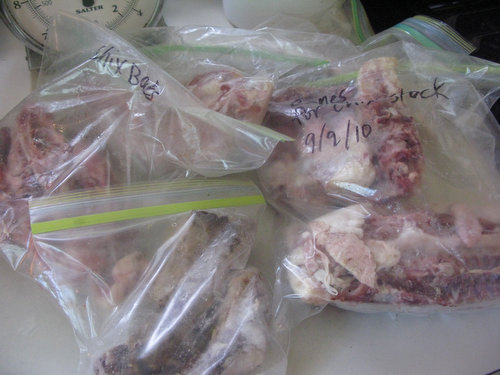
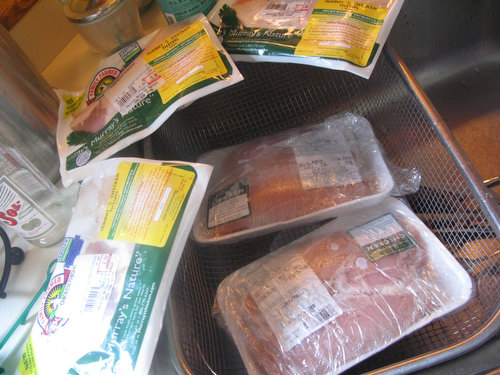
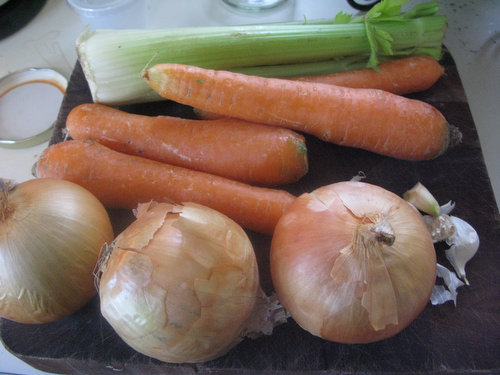

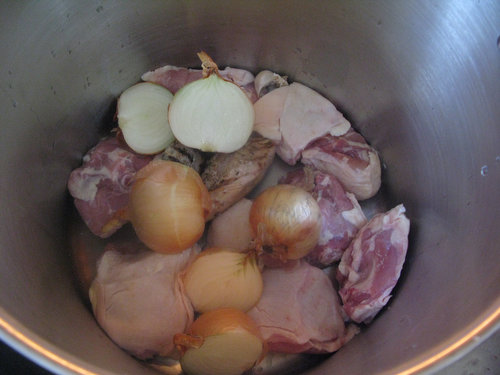
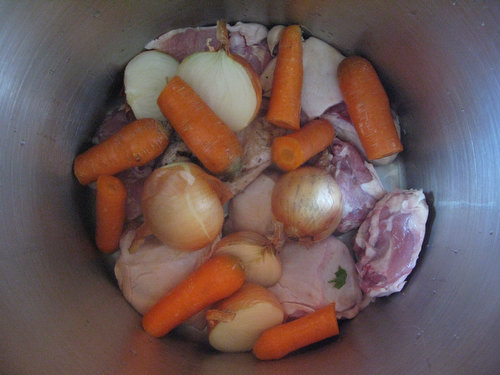
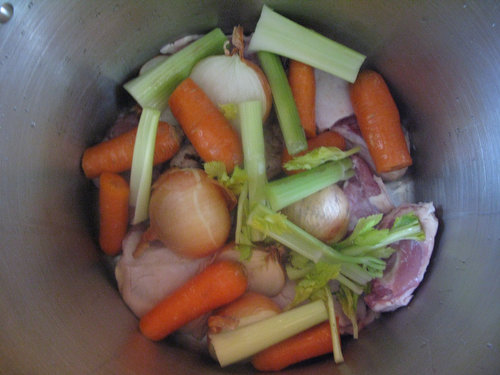
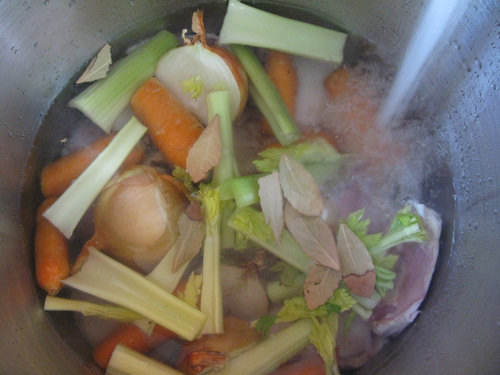
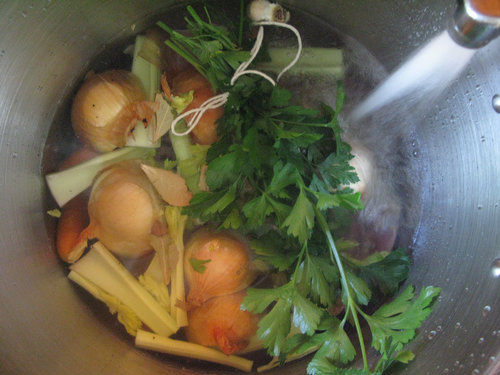
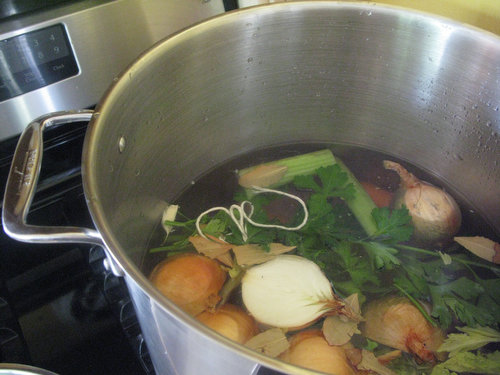
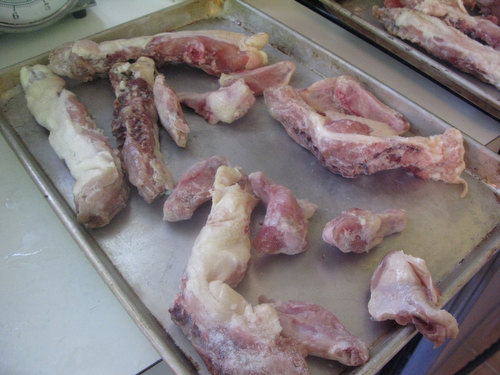
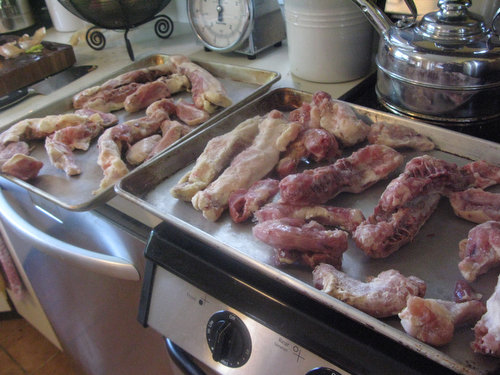

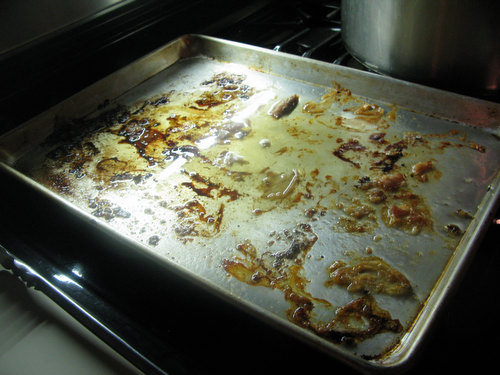
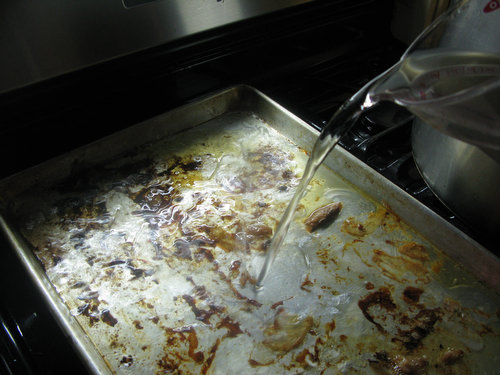
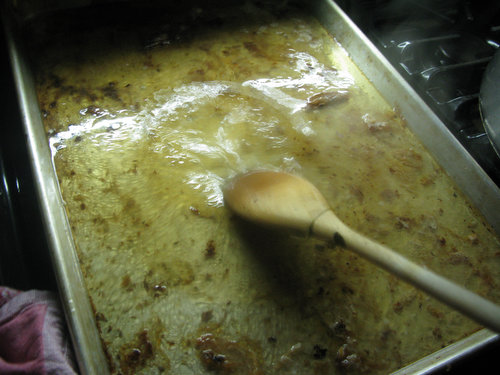

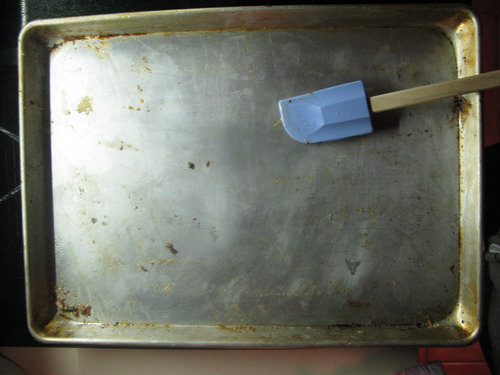

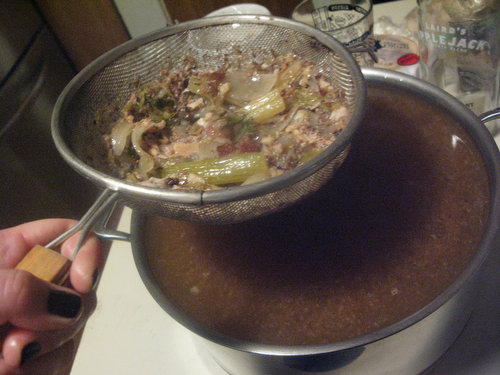
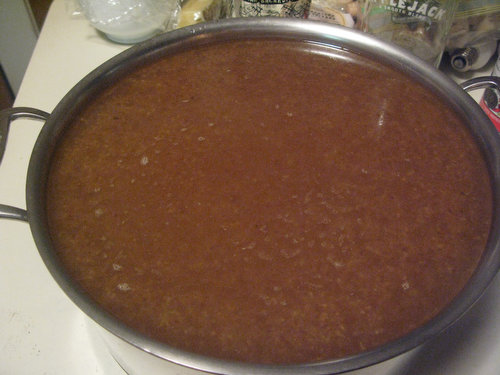
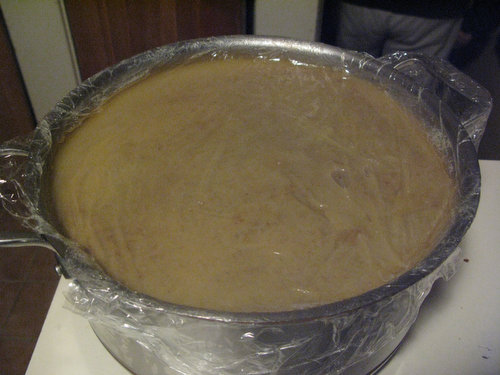
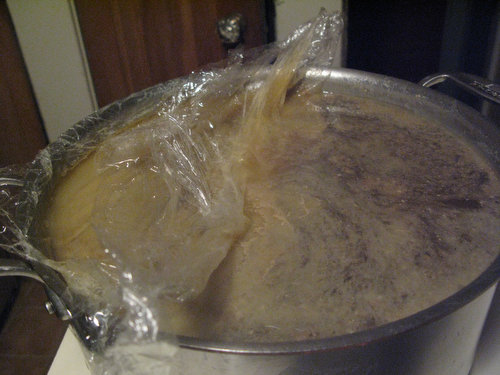
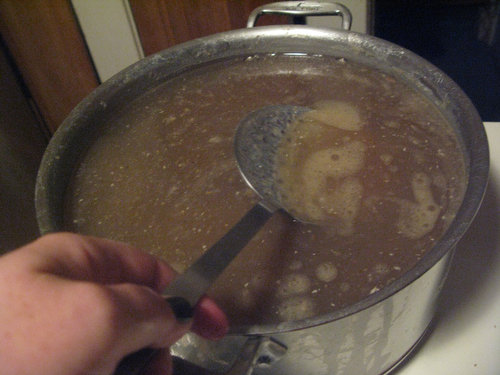
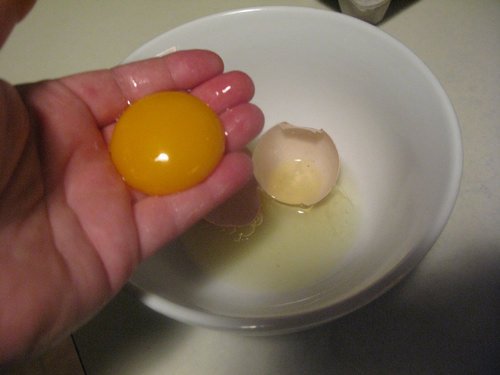
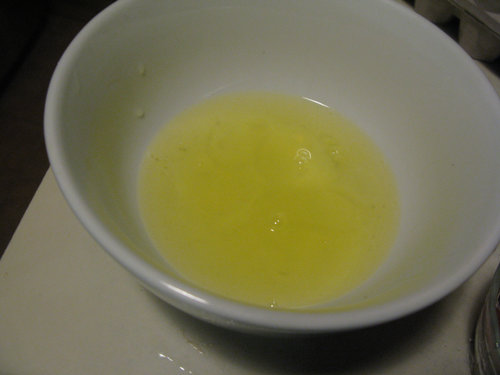
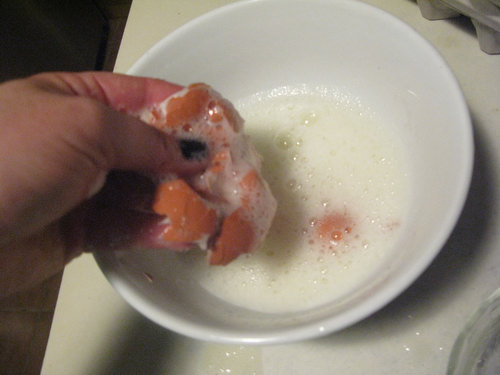
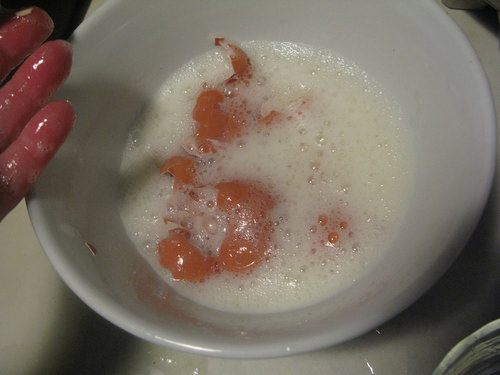
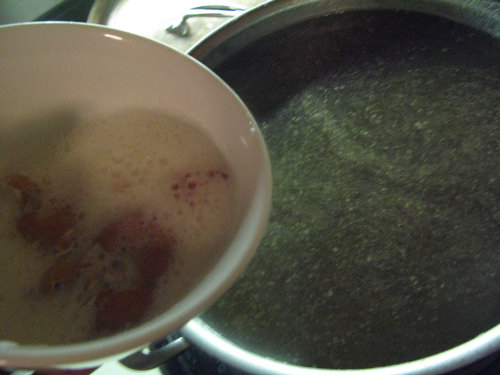
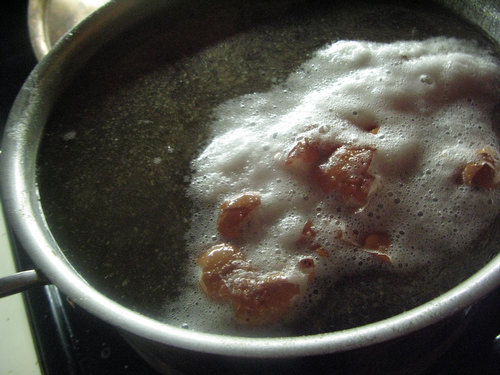

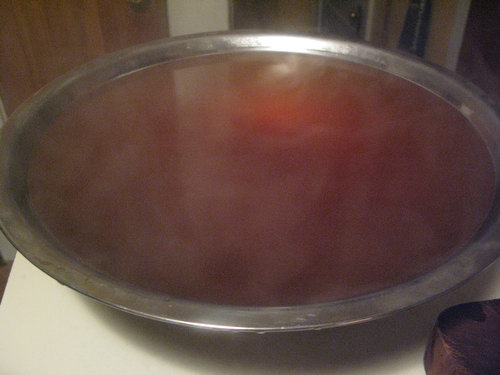
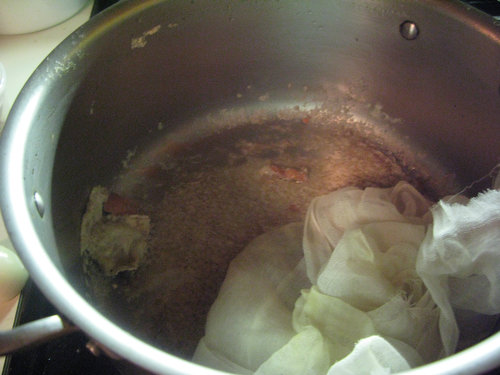
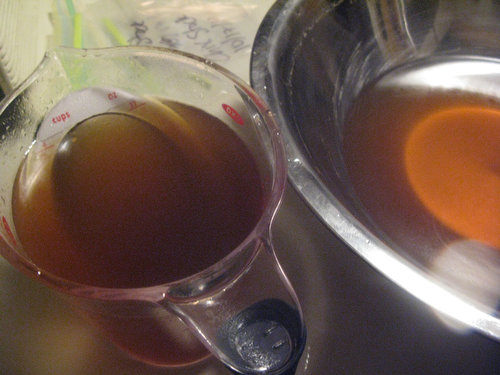


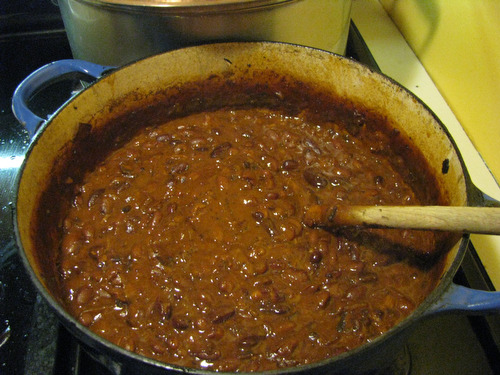
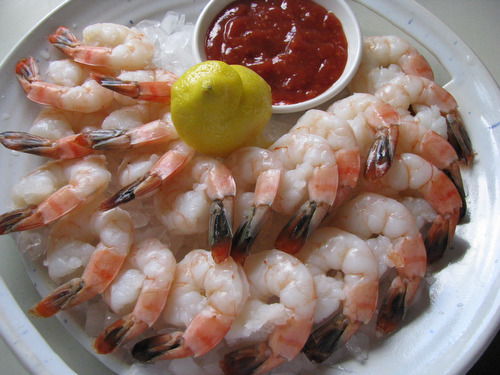
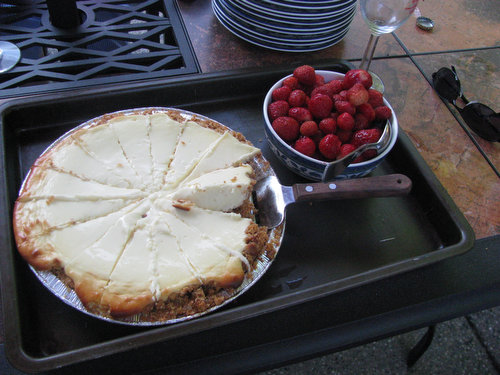



Pingback: Saturday Night Supper: Posole | Sour Cherry Farm